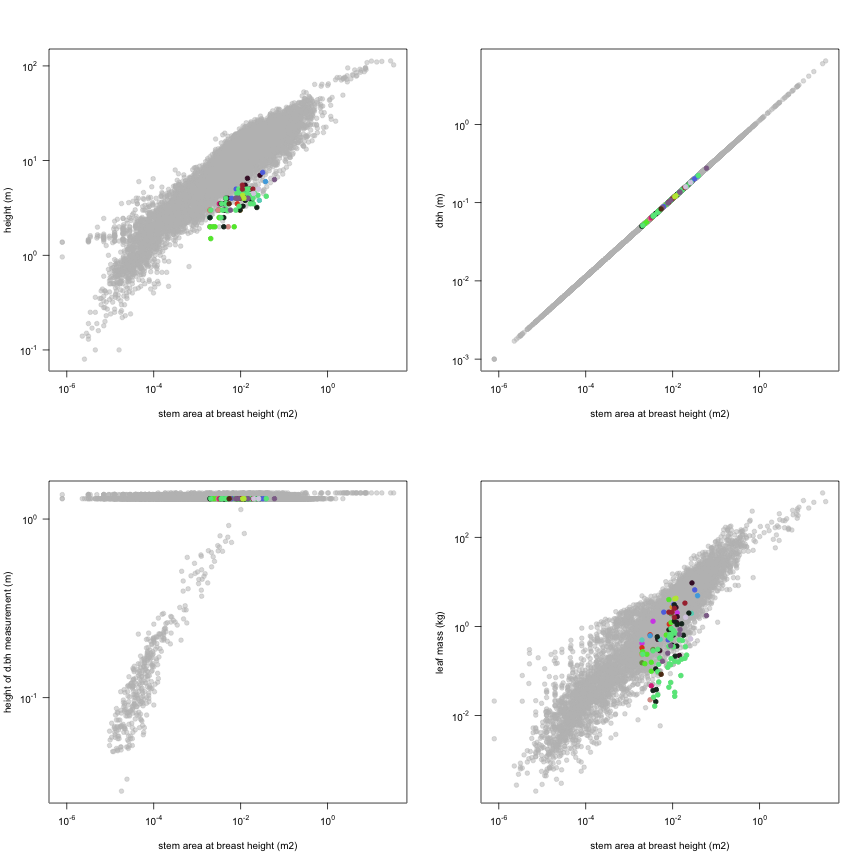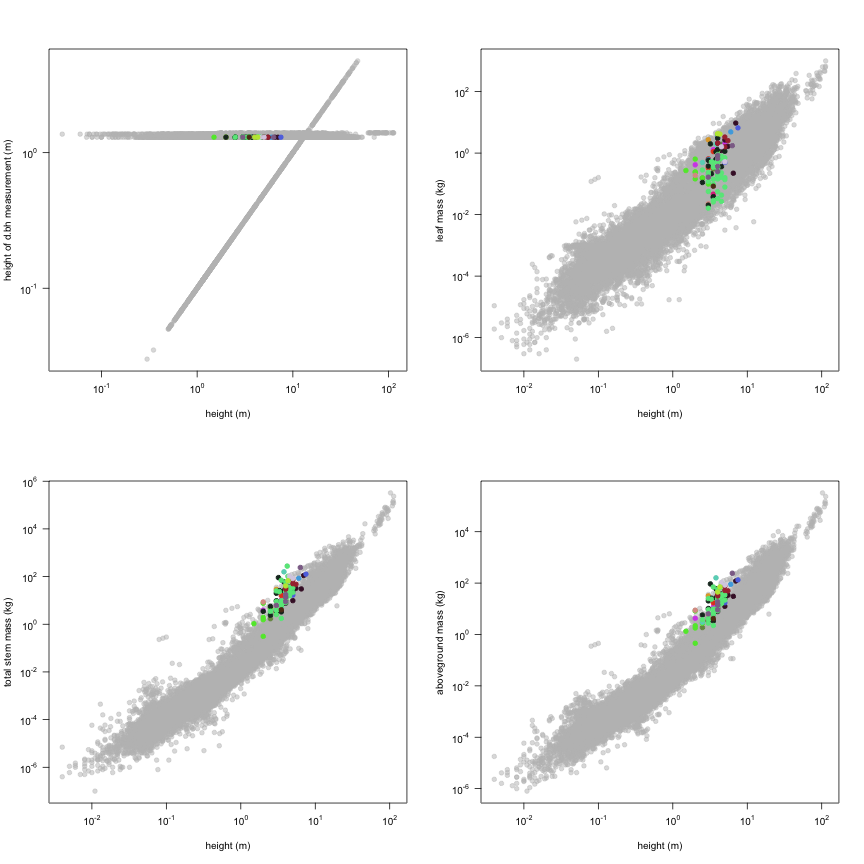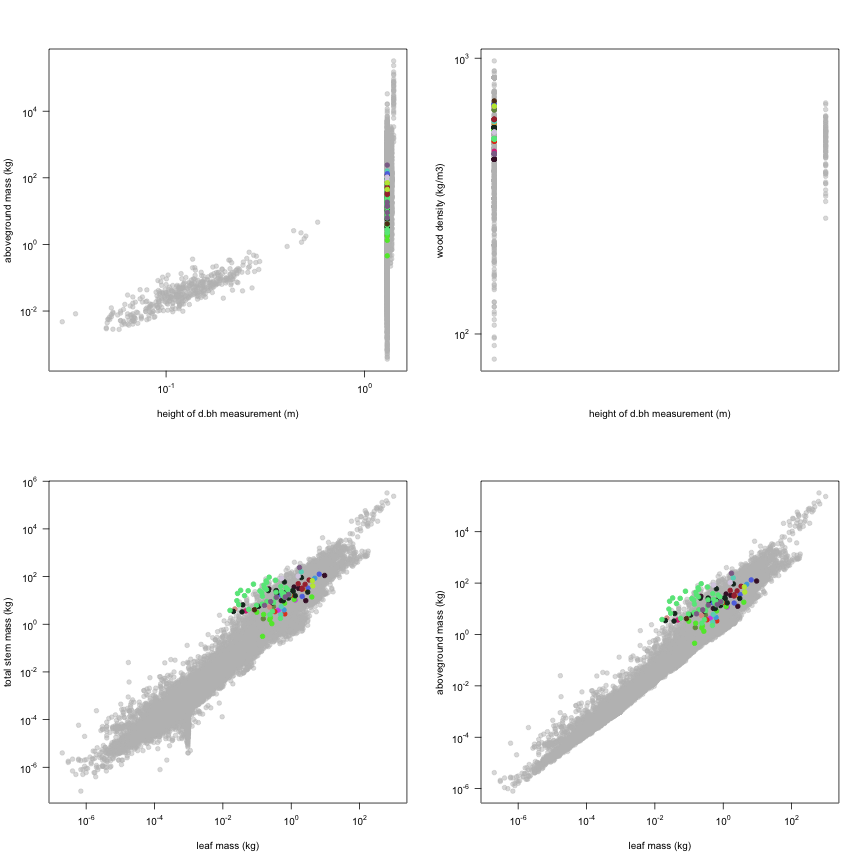-
Notifications
You must be signed in to change notification settings - Fork 19
Ribeiro2011
Data contributor: Sabina C. Ribeiro
Email: [email protected]
Address:
- Universidade Federal do Acre, Centro de Ciências Biológicas e da Natureza, Curso de Engenharia Florestal, 69920-900 Rio Branco (AC), Brazil
Citation: Ribeiro SC, Fehrmann L, Soares CPB, Jacovine LAG, Kleinn C and de Oliveira Gaspar R (2011). 'Above- and belowground biomass in a Brazilian Cerrado.' Forest Ecology and Management, 262(3), pp. 491-499.
DOI: 10.1016/j.foreco.2011.04.017
Abstract: Cerrado is a biome that occupies about 25% of the Brazilian territory and is characterized by a gradient of grassland to savanna and forest formations and by high species richness. It has been severely affected by degradation and deforestation and has been heavily fragmented over the past 4-5 decades. Despite the recognized overall ecological importance of the Cerrado, there are only few studies focusing on the quantification of biomass in this biome. We conducted such a case study in the South-East of Brazil in a cerrado sensu stricto (cerrado s.s.) with the goal to produce estimates of above- and belowground biomass and to develop allometric equations. A number of 120 trees from 18 species were destructively sampled and partitioned into the components: leaves, branches and bole. Five models with {DBH} (D), height (H), {D2H} and wood density ({WD)} as independent variables were tested for the development of allometric models for individual tree aboveground biomass (leaves+branches+bole). One model based on basal area ({BA)} as a stand parameter was also tested as an alternative approach for predicting aboveground biomass in the stand level. Belowground biomass was estimated by subsampling on 10 sample plots. Mean aboveground tree biomass (bole, branches and leaves) was estimated to be 62,965.5 kg ha-1({SE=14.6%)} and belowground biomass accounted for 37,501.8 kg ha-1 ({SE=23%).} The best-fit equation for the estimation of individual tree aboveground biomass include {DBH} and wood density as explanatory variables (R2=0.898; {SEE=0.371)} and is applicable for the diameter range of this study (5.0-27.6 cm) and in environments with similar conditions of the cerrado s.s. sampled. In the stand level, the model tested presented a higher goodness of fit than the single tree models (R2=0.934; {SEE=0.224).} Our estimates of aboveground biomass are higher than reported by other studies developed in the same physiognomy, but the estimates of belowground biomass are within the range of values reported in other studies from sites in cerrado s.s. Both biomass estimates, however, exhibit relatively large standard errors. The root-to-shoot ratio of the sample trees is in the magnitude of reported values for savanna ecosystems, but smaller than estimated from other studies in the cerrado s.s.
The dataset includes records for 118 individuals from 18 species belonging to 15 family(ies), presenting 2 functional type(s), growing in 1 condition(s) within 1 major type(s) of habitat, with data included for the following variables:
| Variable | Label | Units | N | Min | Median | Max |
|---|---|---|---|---|---|---|
| latitude | Latitude | deg | 118 | -19 | -19 | -19 |
| longitude | Longitude | deg | 118 | -44 | -44 | -44 |
| a.stbh | Stem area at breast height | m2 | 118 | 0.002 | 0.0092 | 0.06 |
| h.t | Height | m | 118 | 1.5 | 4 | 7.5 |
| d.bh | Dbh | m | 118 | 0.05 | 0.11 | 0.28 |
| h.bh | Height of d.bh measurement | m | 118 | 1.3 | 1.3 | 1.3 |
| m.lf | Leaf mass | kg | 109 | 0.016 | 0.48 | 9.5 |
| m.st | Total stem mass | kg | 118 | 0.31 | 16 | 275 |
| m.so | Aboveground mass | kg | 109 | 0.46 | 17 | 241 |
| r.st | Wood density | kg m-3 | 118 | 430 | 510 | 700 |
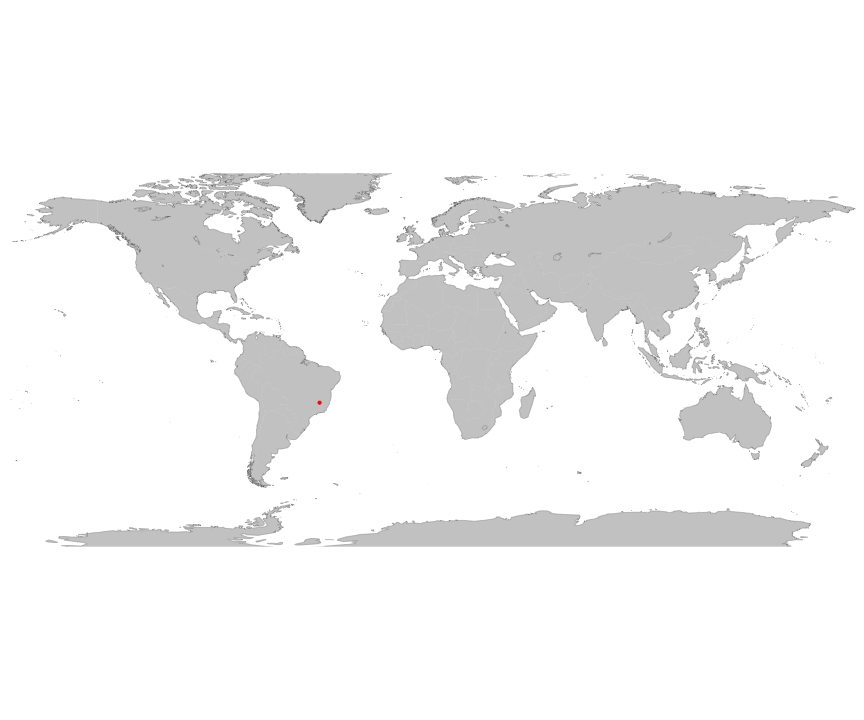
And locally within the country:
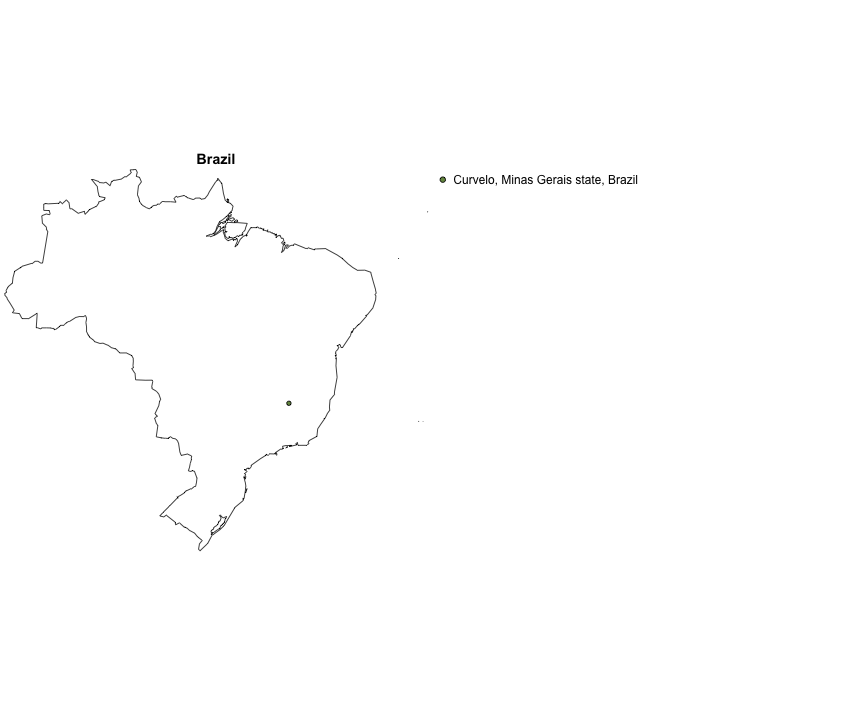
The sites sampled are:
| Location | Longitude | Latitude | Vegetation |
|---|---|---|---|
| Curvelo, Minas Gerais state, Brazil | -44 | -18.66 | Savannah |
The growing conditions of sampled plants was:
| Location | growingCondition |
|---|---|
| Curvelo, Minas Gerais state, Brazil | field wild |
| Species | Family | Pft |
|---|---|---|
| Acosmium sp. | Papilionoideae | deciduous angiosperm, evergreen angiosperm |
| Astronium fraxinifolium | Anacardiaceae | deciduous angiosperm, evergreen angiosperm |
| Byrsonima coccolobifolia | Malpighiaceae | deciduous angiosperm, evergreen angiosperm |
| Curatella americana | Dilleniaceae | deciduous angiosperm, evergreen angiosperm |
| Eriotheca gracilipes | Bombacaceae | deciduous angiosperm, evergreen angiosperm |
| Erythroxylum suberosum | Erythroxylaceae | deciduous angiosperm, evergreen angiosperm |
| Lafoensia pacari | Lythraceae | deciduous angiosperm, evergreen angiosperm |
| Piptocarpha rotundifolia | Asteraceae | deciduous angiosperm, evergreen angiosperm |
| Plathymenia reticulata | Mimosaceae | deciduous angiosperm, evergreen angiosperm |
| Pouteria torta | Sapotaceae | deciduous angiosperm, evergreen angiosperm |
| Pterodon emarginatus | Papilionoideae | deciduous angiosperm, evergreen angiosperm |
| Qualea grandiflora | Vochysiaceae | deciduous angiosperm, evergreen angiosperm |
| Qualea parviflora | Vochysiaceae | deciduous angiosperm, evergreen angiosperm |
| Sclerolobium sp. | Caesalpinioideae | deciduous angiosperm, evergreen angiosperm |
| Solanum sp. | Solanaceae | deciduous angiosperm, evergreen angiosperm |
| Strychnos pseudoquina | Loganiaceae | deciduous angiosperm, evergreen angiosperm |
| Stryphnodendron adstringens | Mimosaceae | deciduous angiosperm, evergreen angiosperm |
| Terminalia argentea | Combretaceae | deciduous angiosperm, evergreen angiosperm |
Sampling strategy: Ten plots of 20 m x 25 m (0.05 ha) were established in a systematic grid over the forest area. The plots were separated 200 m from each other along two transect lines. On these sample plots, for all trees with DBH >5 cm the girth was tape measured, the tree height was visually estimated by experienced field crews in 0.5 m classes and species was identified.
Stem cross sectional area: The stem cross sectional area (g) was calculated as follows: g=(PI * DAP2)/40000, where dbh is in cm and g in m2.
Height: Total tree height was visually estimated by experienced field crews in 0.5 m classes.
Biomass: Selection of sample trees for aboveground biomass determination was prepared on the basis of data from the inventory, proportional to the species contribution to total basal area. A number of 120 trees from 18 species were destructively sampled and partitioned into the components: leaves, branches and bole. Belowground biomass was estimated per area by subsampling on 10 sample plots. Fresh weight and dryweight after drying at 70oC were recoded.
Wood density: Two wood samples were taken from each stem disk on opposite sides. Each wood sample was volume measured by water displacement and weighed after oven drying at between 101-105 degC until weight stabilized. The basic wood density for one wood disk was calculated as an average of the two measurements per disk.
Wood mass: Stem and branches were cut in appropriately sized pieces and weighed together using a standard balance of 150 kg capacity and 100 g division. A stem wood disk was taken from each harvested tree to determine fresh weight to dry weight relation.
Leaf mass: All leaves of single trees were collected manually and fresh weight was recorded. A composite sample of leaves was manually collected for each individual and weighed to determine fresh weight to dry weight relation.
Growth environment: The Cerrado remnant where this study took place can be classified as cerrado sensu stricto tipico. This phytophisionomy is characterized by high species richness of shrubs and trees with mean height of about 3-6 m and tree cover of 20-50%. In the whole study site there was no clear evidence of any recent anthropogenic disturbance.
Year collected: 2009
This is how the study Ribeiro2011 fits in the entire dataset (grey). each colour represents a species. A legend of species names with colours is included at the end for reports with 1 < n < 20 species.
